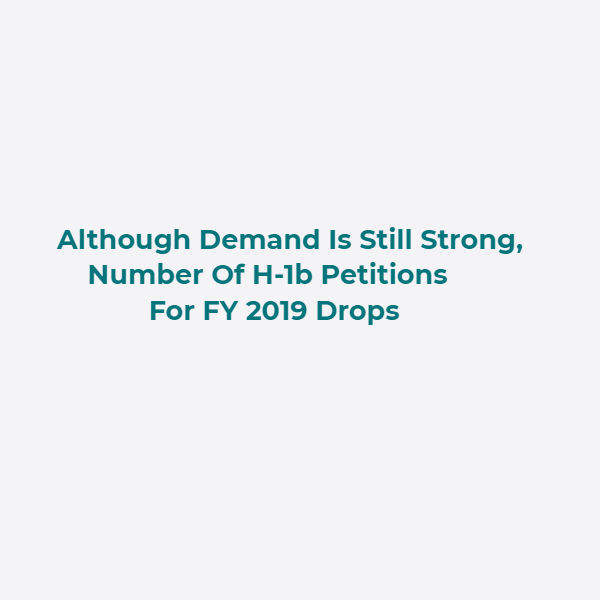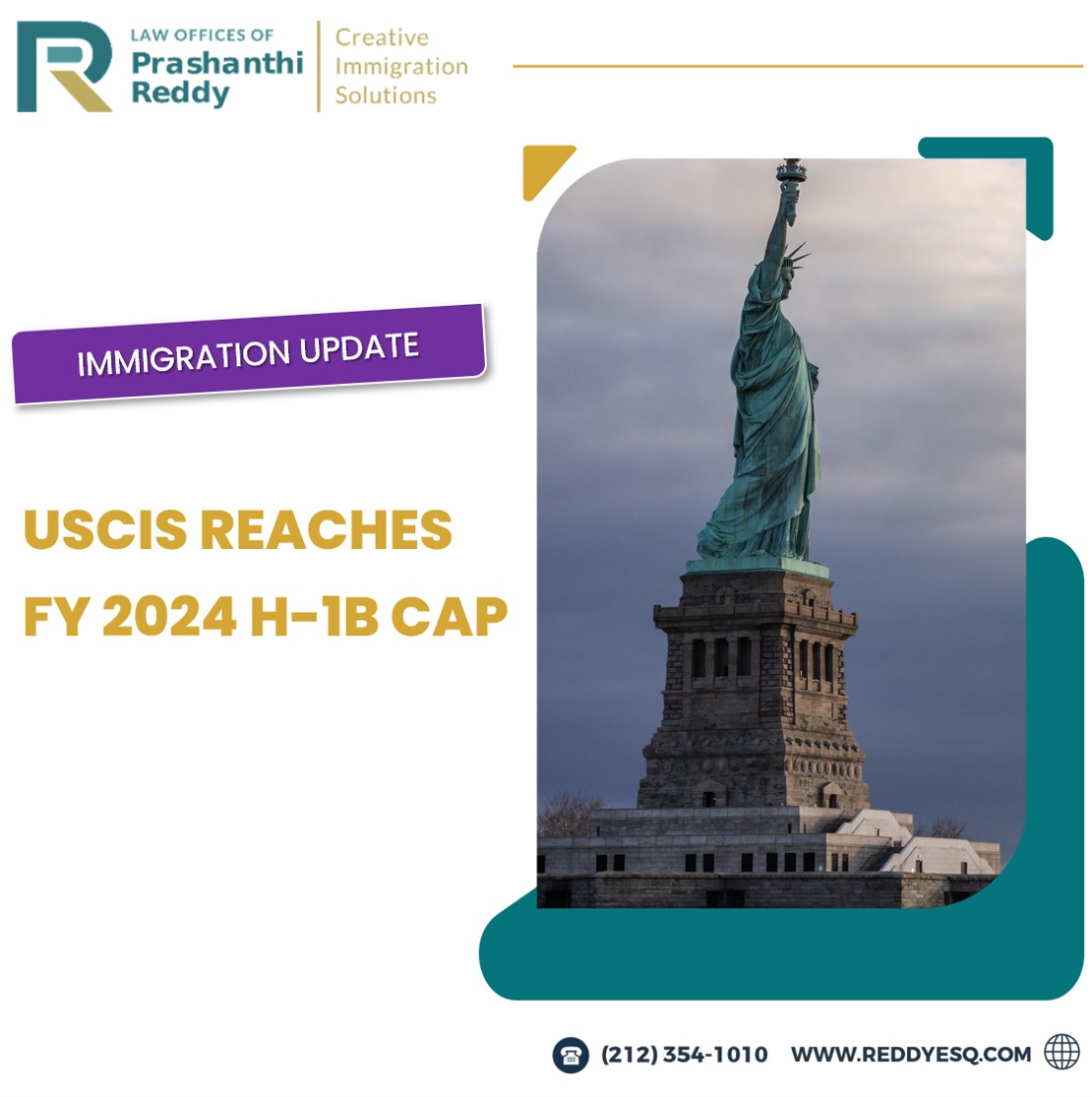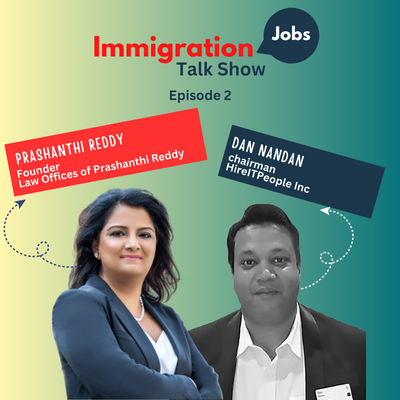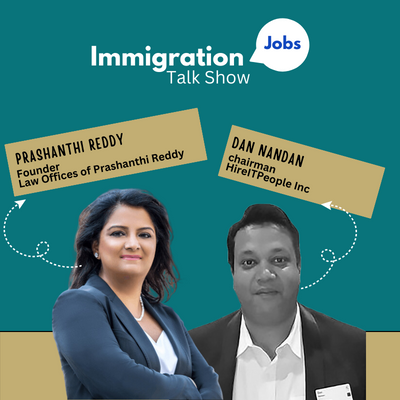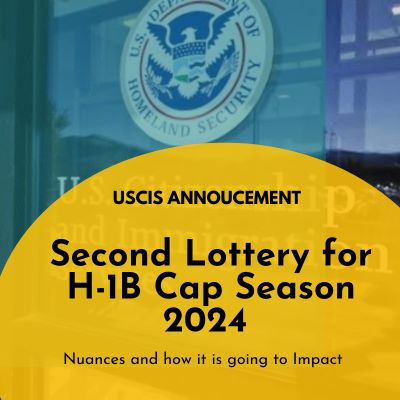As announced by the US Citizenship and Immigration Services, on April 12, for the second consecutive year, there has been a reduction in the number of H-1b petitions received by the USCIS. This April, the USCIS received 190,098 petitions. This is a significant drop of 4 percent compared to the 199,000 petitions received in the previous year.
What Are Some Current H-1B Trends?
Opened on April 2, the filing period lasted for five days. After which a lottery process was used to grant H-1b visas to 85,000 beneficiaries. The advanced degree cap (for holders of U.S. advanced degree, this is a master’s degree or higher), which takes 20,000 applications, and the regular cap (includes holders of bachelor’s degree and holders of advanced degrees who weren’t picked under the advanced degree cap), which takes 65,000 applications, were both met in the first five days. As such, no additional H-1b applications were accepted.
The decline in the Number of H-1B Petitions Filed
One trend that stands out is the current consecutive decline in the number of H-1b petitions filed two years in a row. While the reasons for the decline in H-1b petitions are unclear, the uncertainty of the H-1b program’s future may be the reason for the decline. Changes in policies and the stance of the current administration could be reasons for the decline.
Policy Changes Affected By the Contracts And Itineraries Requirements For H-1B Petitions Involving Third-Party Worksitesand the Recession Of Guidance Memo On H-1b Computer-Related Positions Memorandums
While the H-1b visa program was created with the aim of mitigating a skills gap existing in the United States, critics of the program including President Trump believes several firms abuse the system. One such way through which firms may abuse the H-1b visa is by flooding the system with applicants who are then outsourced to tech companies. The critics of the H-1b visa program believes this sometimes lead to American jobs being replaced.
It comes as no surprise that a policy memo released in February, Contracts and Itineraries Requirements for H-1B Petitions Involving Third-Party Worksites, sought to tackle this problem.
The policy changes introduced by the memo required H-1b beneficiaries provide more information on their employment so as to make sure that they do the jobs they are employed for.
This policy memo requires employers to provide information on work assignments such as locations of assignments and dates. This is to verify the relationship between the company applying for the H-1b visa and the beneficiary.
The length of the H-1b visa is also covered in this memo. According to the memo, the USCIS determines if there will be sufficient work available to an H-1b beneficiary by the examining work project documents. If there are signs that there would not be enough work for the full 3 years requested by the employer, a shorter H-1b visa may be approved.
An earlier policy memo released on March 31, 2017 rescinded an older policy memo called the Guidance memo on H-1b computer-related positions. The new policy memo dictated that since a 4-year bachelor’s degree is not the standard minimum requirement for a computer programmer position. The computer programmer position is no longer inherently eligible for an H-1b classification regardless of whether or not the beneficiary has a 4-year bachelor’s degree. This is of concern to many, because according to data released by the USCIS, IT jobs in the Custom Computer Programming Services industry accounted for the most H-1b petitions. Other occupational categories, which according to the Occupational Outlook Handbook do not have a standard minimum requirement for entry to be a 4-year bachelor’s degree, will likely be largely reviewed as well.
This effectively means that the occupation, for which most H-1b visa petitions are filed for, Custom Computer Programming Services, will be under much scrutiny.
More Changes Incoming
In a letter written on April 4, 2018, L. Francis Cissna (the USCIS director), the USCIS plans on revising what “speciality occupation” entails. This is to ensure that the best foreign workers enter the United States through the H-1b program. In addition, the USCIS plans to undertake a revision on the delineation of employment and the employer-employee relationship. These proposed changes are to protect American workers and wages.
Increase in H-1b Request for Evidence (RFE)Inquiries
Request for evidence is simply a challenge that asserts that the beneficiary of an H-1b visa does not meet the requirements and as such further evidence needs to be submitted. The USCIS is simply asking for more evidence.
Request for evidence, simply referred to as RFE, have seen an upsurge in recent times. For example, RFEs saw an increase from 59,000 between January 2016 and August 31, 2016 to 85,000 between January 2017 and August 31, 2017.
This trend seems to be in line with the current administration’s stance on the H-1b visa program.
What Happens After The Cap Number Is Reached?
The USCIS uses a lottery selection process to pick out the allocated 20,000 and 65,000 amounts for the advanced degree cap and the regular cap respectively. Firstly, the number allocated for the advanced degree cap goes through the lottery process. Unselected petitions from the advanced degree cap are then add to lottery process for the 65,000 regular cap.
After the completion of the lottery process, unselected petitions along with filing fees are returned to petitioners.
Selected petitioners receive receipt notices.
The USCIS send out visa approvals and request for evidence through the summer and fall months as the USCIS processes the petitions.
Source:
- Cissna, L. F. (2018, April 4). Buy America, Hire America Update [Letter written April 4, 2018 to Charles E. Grassley]. Retrieved April 30, 2018.
- Fortune. 2018. H-1B Visa Applications Are Down for the Second Year in A Row. [ONLINE] Available at: http://fortune.com/. [Accessed 30 April 2018].
- The White House. 2017. Presidential Executive Order on Buy American and Hire American. [ONLINE] Available at https://www.whitehouse.gov/. [Accessed 30 April 2018].
- USCIS. 2017. Number of H‐1B Petition Filings Applications and Approvals, Country, Age, Occupation, Industry, Annual Compensation ($), and Education FY2007 ‐ FY2017. [ONLINE] Available at: https://www.uscis.gov/ [Accessed 30 April 2018].
- USCIS. 2017. Rescission of the December 22, 2000 “Guidance memo on H1B computer-related positions”. [ONLINE] Available at: https://www.uscis.gov. [Accessed 30 April 2018].
- USCIS. 2018. Contracts and Itineraries Requirements for H-1B Petitions Involving Third-Party Worksites. [ONLINE] Available at: https://www.uscis.gov. [Accessed 30 April 2018].

